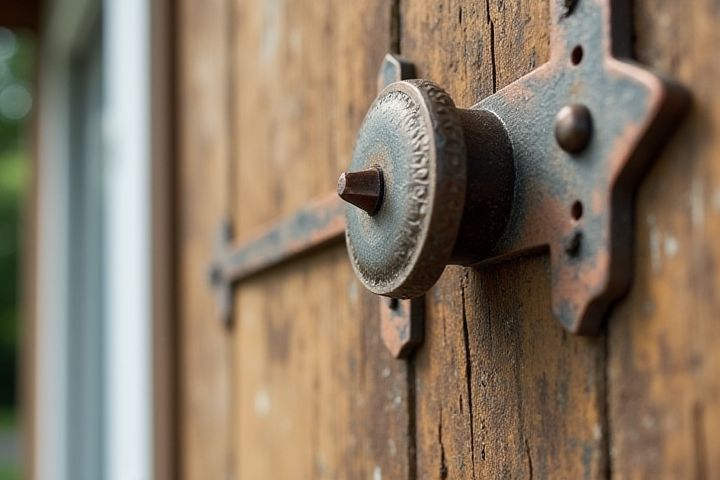
Estimating costs for house repairs involves assessing both immediate needs and potential future projects. Begin by creating a comprehensive list of repairs, distinguishing between urgent repairs and long-term maintenance tasks. Allocate a specific percentage of your monthly income, often around 1-3%, to save for unexpected issues like plumbing or roofing problems. Research common repair costs in your area to better understand what a realistic budget should encompass. Finally, consider establishing an emergency fund exclusively for home repairs, which can alleviate financial strain when unforeseen repairs arise.
How To Budget For House Repairs
Assess repair needs
Assessing repair needs is crucial for effective budgeting in home maintenance. Start by conducting a thorough inspection of your property, focusing on critical areas such as the roof, plumbing, electrical systems, and foundation. Prioritize repairs based on urgency and potential impact on your home's value, ensuring that essential systems are addressed first. Document the condition of each area and create a maintenance schedule, allowing you to allocate appropriate funds for repairs over time, helping you avoid unexpected expenses.
Prioritize urgent repairs
Prioritize urgent repairs by assessing the condition of critical systems in your home, such as plumbing and electrical. Studies indicate that neglecting these issues can lead to average repair costs ranging from $1,000 to $3,000 for plumbing alone. Allocate at least 1% of your home's value annually for unexpected repairs to ensure you're prepared for emergencies. You should regularly review the condition of your home to adjust your budget and address any new urgent repairs that arise.
Obtain multiple quotes
Obtaining multiple quotes is crucial for effective budgeting for house repairs, as it allows you to compare prices and services. Aim to gather at least three estimates from different contractors to ensure you're getting a fair market rate, typically within 10-20% of each other. This process not only helps identify the most cost-effective option but also provides insight into the scope of work required. Ensure each quote includes a detailed breakdown of materials and labor costs, which will help you make an informed financial decision.
Allocate emergency fund
Allocating an emergency fund specifically for house repairs is essential for maintaining your property and avoiding unexpected financial strain. Aim to set aside 1% to 3% of your home's value each year, which translates to approximately $1,000 to $3,000 for a $100,000 home. This fund will provide you with a financial cushion to address urgent repairs, such as plumbing issues or roof leaks, without disrupting your monthly budget. Regularly reassess your fund and adjust contributions based on your home's age and condition, ensuring you are prepared for any major expenses that may arise.
Consider DIY projects
When budgeting for house repairs, consider allocating funds for DIY projects that can save you money while enhancing your home. Start by assessing essential repairs, such as fixing leaks, painting walls, or updating fixtures, which can often be tackled with basic tools and tutorials. Research local hardware stores for materials and discounts, and consider borrowing tools from neighbors or friends to minimize costs. Embracing DIY not only reduces expenses but also gives you a sense of accomplishment and pride in your home improvement efforts.
Research material costs
Researching material costs is crucial when budgeting for house repairs, as it allows you to accurately estimate expenses. Start by obtaining quotes from local suppliers, comparing prices for essential items like lumber, roofing, or plumbing fixtures, which can vary significantly. Online resources such as home improvement websites or construction forums may provide insights into average costs and trends in your area. By allocating around 15% of your overall repair budget for unforeseen material price fluctuations, you can effectively manage your finances and avoid surprises during the renovation process.
Plan for seasonal maintenance
Planning for seasonal maintenance is essential for effective budgeting for house repairs. You should allocate funds based on your home's specific needs, such as approximately 2% to 4% of your home's value annually. For instance, if your house is worth $300,000, setting aside $6,000 to $12,000 for maintenance can help cover unexpected repairs caused by weather changes, such as roof inspections in the fall and plumbing checks in the spring. Tracking these expenses monthly can provide clarity and ensure you have the resources ready when urgent repairs arise.
Monitor for potential issues
Regularly inspect your home for signs of wear and tear, such as leaks, cracks, or mold, which can indicate underlying problems. Set aside a dedicated monthly budget of at least 1% of your home's value for ongoing maintenance and unexpected repairs. Create a checklist to monitor the age and condition of major systems and appliances, including your roof, HVAC, and plumbing, helping you anticipate future expenses. By staying proactive and allocating funds for potential issues, you can maintain your home's value and avoid costly emergencies.
Schedule regular inspections
Schedule regular inspections for your home to identify repair needs before they escalate into costly issues. Aim for at least two thorough inspections each year, focusing on roofing, plumbing, and HVAC systems, which can collectively account for 50% of repair costs if neglected. By setting aside 1-3% of your home's value annually for maintenance, you can effectively cover minor repairs and prepare for larger projects. You may find that this proactive approach not only saves money but also increases your home's longevity and value.
Keep repair records
Keeping meticulous repair records is essential for effective budgeting for house repairs. Document each repair's cost, date, and details to help you analyze patterns over time and predict future expenses. This practice not only allows you to track spending, but it also highlights areas that may require more frequent attention, enabling you to allocate a more accurate budget. By maintaining these records, you can make informed decisions on whether to tackle repairs immediately or schedule them for a later date, ultimately ensuring your home stays in optimal condition without straining your finances.
